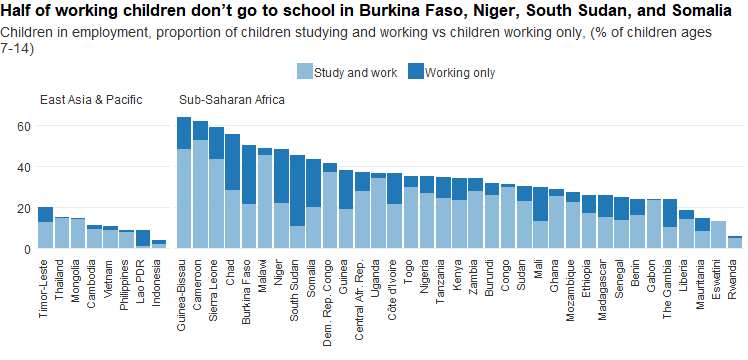
 Note: Data may not be fully comparable across countries as the methods and sampling for data collection may differ. Figure displays most recent year available during 2005-2016; and data are available for 92 countries.
Note: Data may not be fully comparable across countries as the methods and sampling for data collection may differ. Figure displays most recent year available during 2005-2016; and data are available for 92 countries.
The proportion of children, ages 7-14, who work varies across countries, ranging from 64 percent in Guinea-Bissau (2014) to 1.2 percent in Jordan (2016). While in some countries a substantial proportion of working children manage to attend school at least some of the time, this is not always the case. In Burkina Faso, Niger, South Sudan, and Somalia where more than one third of children ages 7-14 work, half of working children don’t attend school. Other countries such as Pakistan and Lao PDR have relatively smaller shares of working children, but most of them don’t attend school. There are also children who are not counted here, such as those (who are often girls) working in hidden forms of employment such as domestic service.
However, even children who both work and go to school are often deprived of full learning opportunities, and children’s work can impede physical and mental development. Child labor is not only a serious violation of children’s rights, but it also has serious consequences for the productivity of the next generation of workers.